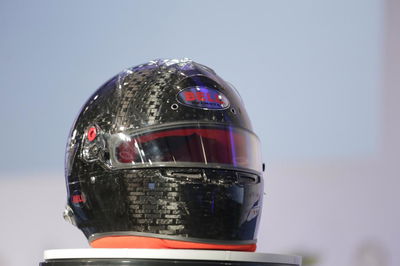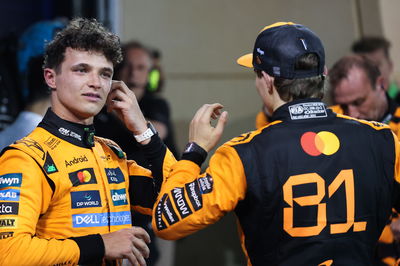FIA reveals new standard F1 helmet for 2019
The FIA has formally revealed the new, mandatory helmet that will be used by all Formula 1 drivers from the 2019 season following a period of study and research to improve safety standards.
On the final day of the FIA Sport Conference in Manila on Wednesday, the FIA officially unveiled the new helmet design, called ‘FIA 8860-2018’, with more than a decade of research going into helping to improve safety standards.
The FIA worked closely with helmet manufacturers such as Stilo, Bell Racing, Schuberth and Arai, all of whom are now able to supply the helmet.

The FIA has formally revealed the new, mandatory helmet that will be used by all Formula 1 drivers from the 2019 season following a period of study and research to improve safety standards.
On the final day of the FIA Sport Conference in Manila on Wednesday, the FIA officially unveiled the new helmet design, called ‘FIA 8860-2018’, with more than a decade of research going into helping to improve safety standards.
The FIA worked closely with helmet manufacturers such as Stilo, Bell Racing, Schuberth and Arai, all of whom are now able to supply the helmet.
All drivers in F1 must use the helmet from the start of the 2019 season, with other FIA championships set to follow soon after.
“The current top-end helmets are already the safest in the world but the new standard will take them to the next level,” outgoing FIA Safety Director Laurent Mekies said
“It is important for all of our safety research that we continually strive to improve and this is why we are requiring all manufacturers to meet this tougher standard for our championships.”
Stephane Cohen, Bell Racing Helmets Chairman, added: “The area of testing will be expanded compared to what we currently enjoy, which means that the overall protection of those helmets could be considered better and as usual the FIA will be at the forefront of helmet protection technology.
“This will be the most advanced standard in the world without any possible discussion.”
According to the FIA, changes with the new helmet design include:
- Top of visor opening lowered by 10mm to incorporate advanced ballistic protection that achieves unprecedented levels of safety during impact from debris.
- Extended areas of protection on sides to offer compatibility with latest single-seater headrests and closed car seat-side head protection systems, ensuring energy management is exactly where headrests are positioned.
- Helmet shell construction using advanced composite materials to ensure it is not only tough but also resistant to crushing and penetration.
- Test methods include variable crash speeds to account for different accidents and a range of weights to account for different mass headforms.
The new helmet is also subject to a more rigorous and stringent testing procedure:
- Standard impact: Helmet impact at 9.5m/s. Peak deceleration on ‘driver’s head’ shall not exceed 275G.
- Low velocity impact: Helmet impact at 6m/s. Peak deceleration shall not exceed 200G with a maximum average of 180g.
- Low lateral impact: Helmet impact at 8.5m/s. Peak deceleration shall not exceed 275G.
- Advanced Ballistic Protection: A 225g metal projectile fired at 250km/h. The peak deceleration shall not exceed 275G.
- Crush: A 10kg weight falling 5.1 metres onto helmet. Lateral and longitudinal tests. The transmitted force should not exceed 10 kN.
- Shell penetration: A 4kg impactor dropped onto helmet at 7.7 m/s.
- Visor penetration: Air rifle fires 1.2g pellet at visor. Pellet must not penetrate the interior of the helmet.
- Visor coating: Transmitter test to ensure colouration and vision is not significantly changed or distorted.
- Retention system: Roll-off test and dynamic test to ensure strength of chin strap and its attachments.
- Chin guard linear impact: Impact test with full headform at 5.5m/s. The peak deceleration shall not exceed 275G.
- Chin guard crush: Hammer hits chin guard and measures ability to keep impact away from the head.
- FHR mechanical strength: Test to ensure high strength of attachment points for Frontal Head Restraints.
- Projection and surface friction: Test to ensure helmet surface uniformity and that friction is minimised. Shell surface also subjected to BARCOL hardness test for resistance to penetration.
- Flammability: Helmet exposed to 790 C° flame; it must self-extinguish once flame is removed.











